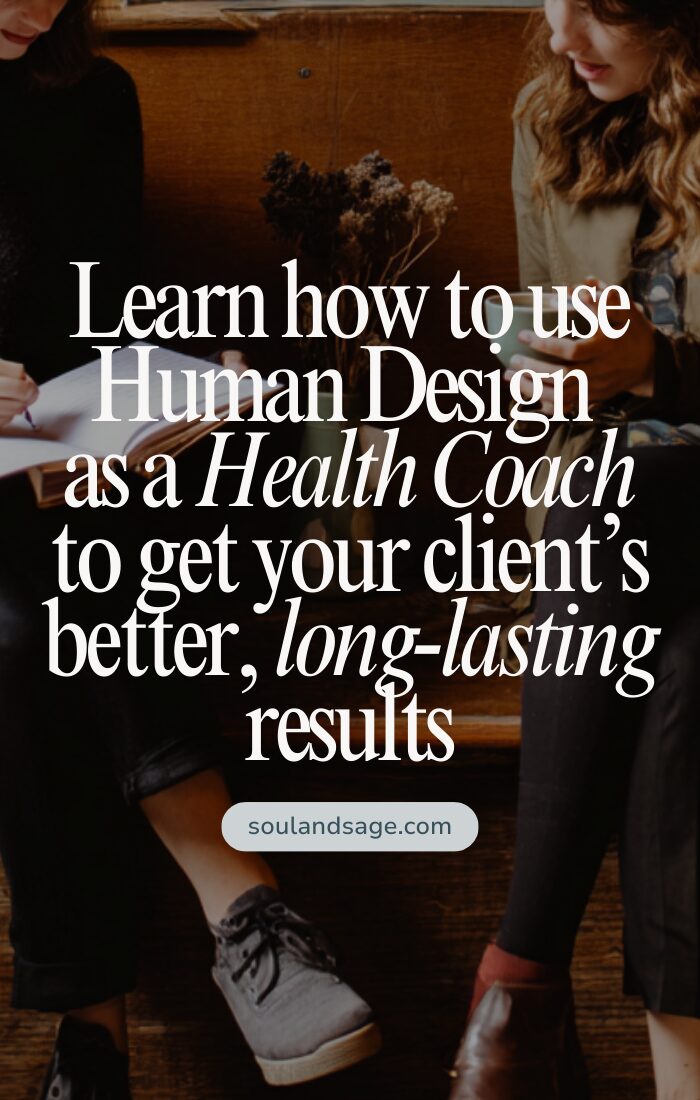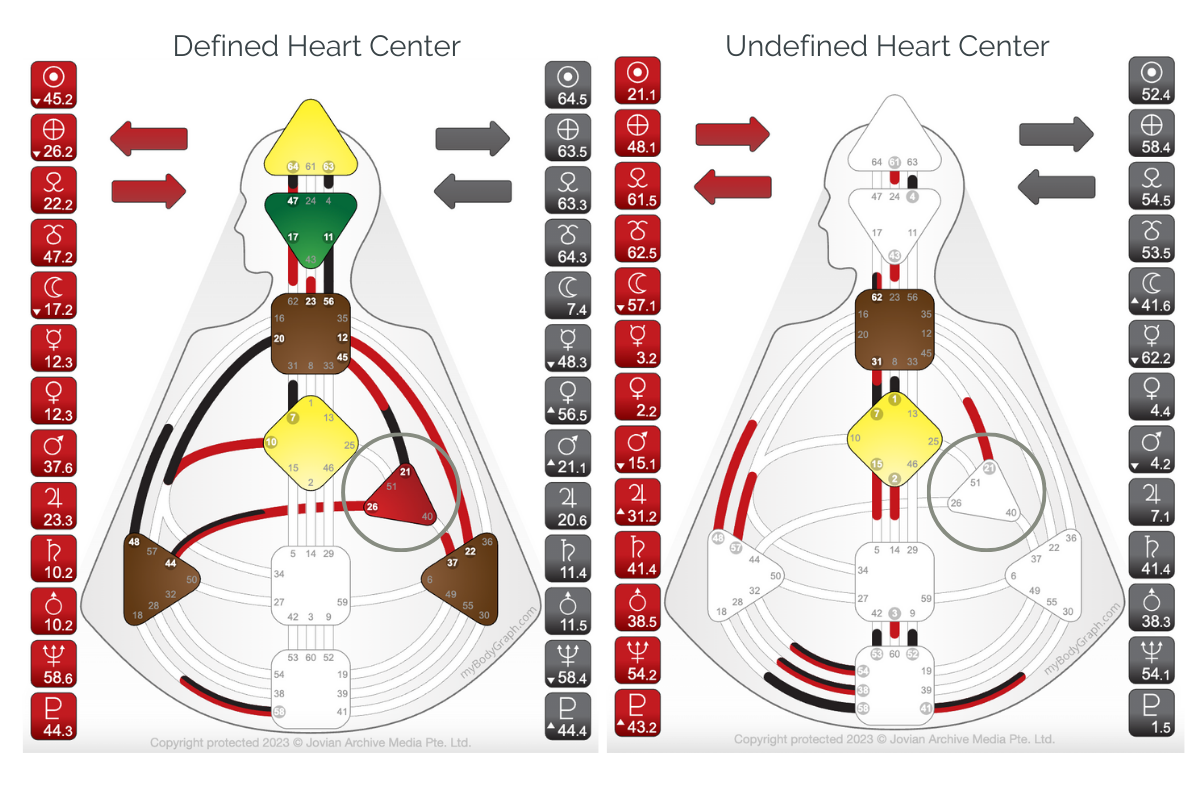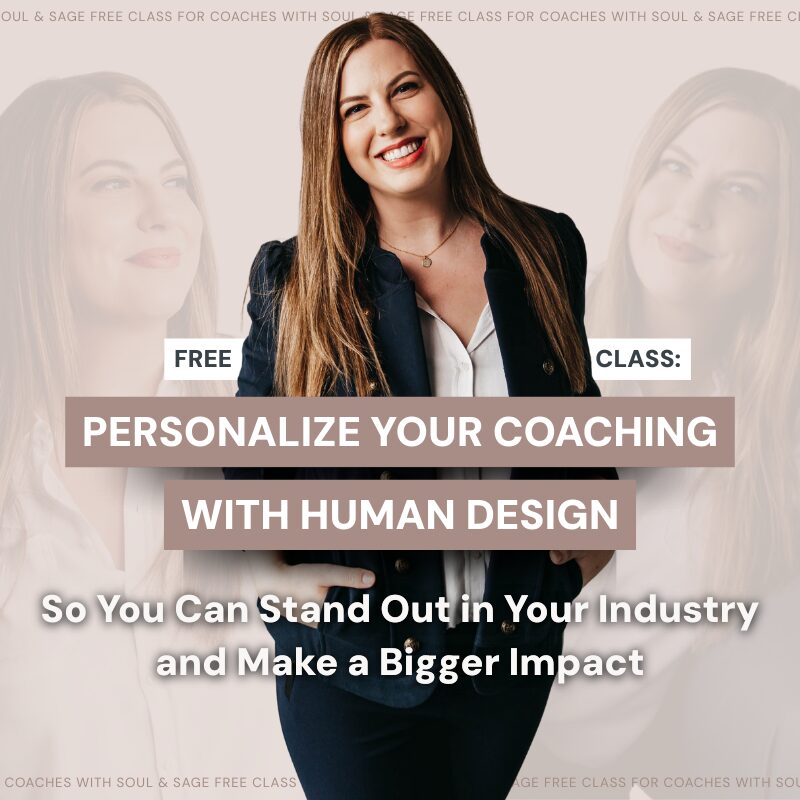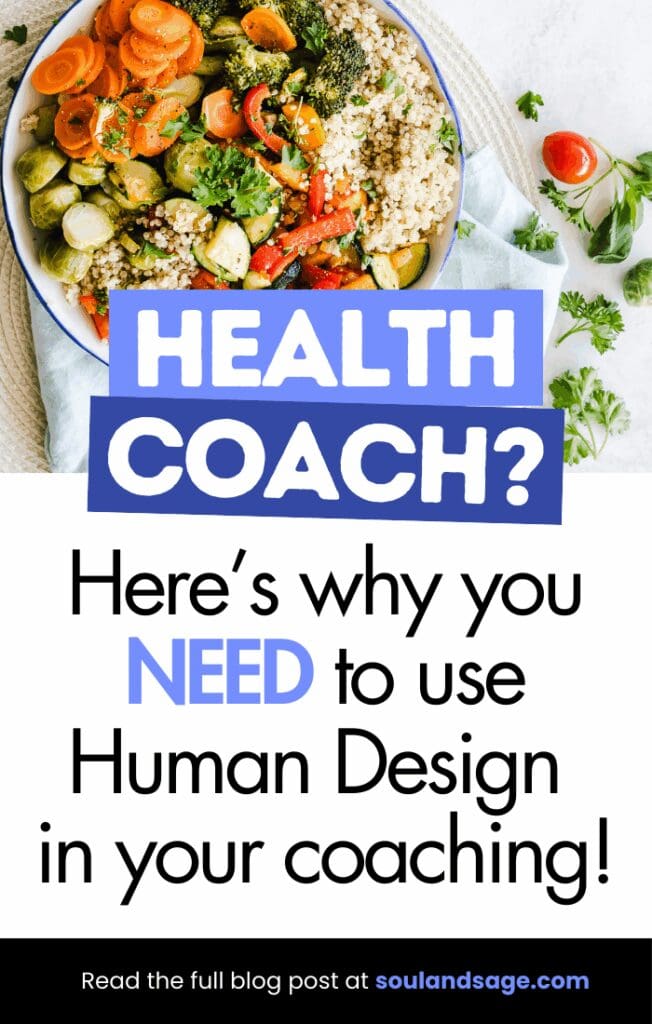As a health coach, your client’s physical and mental wellbeing is your top priority. But how does Human Design tie into this?
Human Design provides “shortcuts”, so to speak, to figuring out the most aligned health routines and actions for your clients.
You’ve probably noticed that there’s a LOT of variety around what actually works for each of your clients, right? Some do better with a structured routine while others need flexibility. Some thrive with a specific style of eating, while others need a completely different nutrition plan. Some do best with daily workouts, while others do best exercising 3-4 times per week.
And yes, these things can sometimes be figured out through trial and error, or by working to align your suggested strategies to your client’s lifestyle. OR you can also use Human Design to speed up the process! Here’s how…

How to Use Human Design as a Health Coach
Here are five areas of Human Design that are helpful to understand as a health or wellness coach. These tools will help elevate your coaching skills and make your containers more personalized, impactful, and effective.
#1. Your Client’s Energy Type
There are 5 different Energy Types in Human Design: Manifestor, Generator, Manifesting Generator, Projector, and Reflector. You can find out your client’s Type by getting their chart here.
Each Energy Type has a different aura, a designed mode of operation, and way of interacting with the world. Each Type also experiences different levels of physical energy, and in different patterns. For example, Generators wake up each day with a set amount of energy that they’re meant to use up that day. They can also “share” this energy with other people in close proximity to them.
Projectors, on the other hand, have less consistent and reliable energy. They need more rest than Generators, and they need to rest proactively before they get tired.
Speaking of rest, some Energy Types need more rest than others and each type needs rest for different reasons. Generators and Mani-Gens need to rest at the end of a long day to recharge their “batteries”, while Manifestors need to rest in between their (often unpredictable) bursts of creative energy. As mentioned above, Projectors need proactive rest built into their days, and Reflectors likely need the same.
Further, each Energy Type has ‘signposts’ that let them know when they’re doing something that’s in alignment or out of alignment with their intended design. These signposts are specific emotions that can signal to you and your client when a particular diet regimen, type of exercise, or other health endeavor is aligned or not aligned for them, providing invaluable guidance to you as their coach.
Signposts of Alignment
- Manifestors: Peace
- Generators and MGs: Satisfaction
- Projectors: Success
- Reflectors: Surprise
Signposts of Misalignment
- Manifestors: Anger
- Generators and MGs: Frustration
- Projectors: Bitterness
- Reflectors: Disappointment
If your client is experiencing one of these emotions, it’s a sign letting you know whether a specific activity is aligned for them or not—and you can then make adjustments to your coaching container and recommendations accordingly.
#2. Your Client’s Heart Center
The Heart Center is one of nine Energy Centers in the Human Design BodyGraph chart. Each Energy Center is a hub of energy in the body, similar to a Chakra. Each Center governs specific kinds of energy.
The Heart Center relates to your sense of willfulness and ability to commit yourself to something and follow through on it.
If you have a defined Heart Center, the triangle circled on the BodyGraph chart will be colored red (as in the image on the left). If your client has a defined Heart Center, he or she will likely have an easier time sticking to a consistent exercise or nutrition plan. People with a defined Heart Center are often competitive by nature. They might love types of exercise where they get to “compete” against other people — e.g., running a race, doing a spin class with a leaderboard, etc.
An undefined Heart Center will be white on the BodyGraph chart. A client with an undefined Heart won’t always be able to rely on their sense of willpower to stick to nutrition or fitness regimens, and consistency shouldn’t be their main focus.
When it comes to commitments and follow-through, the key for someone with an undefined Heart is to not overcommit themselves or make promises they aren’t sure they can keep, either to themselves or to others. The key for someone with a Defined Heart is to only commit themselves to things they know they can put their whole heart into.

Image Source: mybodygraph.com
#3. Your Client’s Determination Variable
The Variables in Human Design are the four arrows near the top of the BodyGraph chart, two on each side. Each of these four arrows can point either to the left or to the right. The top left arrow is the one we’ll talk about today, and it’s called the Determination Variable.

Image Source: mybodygraph.com
Here’s what the Determination Variable can tell you about your clients:
If the top-left arrow points to the left, your client thrives on structured, consistent nutrition and nourishment. These are people who might do well eating at specific times each day, or having a set amount of time between each meal or snack.
If the top-left arrow points to the right, your client will likely do better with a more relaxed, go-with-the-flow approach to nutrition and nourishment. They don’t necessarily need to fuel their bodies in such a structured, consistent way. (These clients might thrive with the principles of intuitive eating!)
#4. Your Client’s HD Environment
Your client’s Environment represents the type of physical space where they most thrive, specifically from the age of 30 onwards. There are six different Environments in Human Design:
- Markets
- Kitchens
- Valleys
- Shores
- Mountains
- Caves
Rather than taking these names literally, think of them as metaphors representing certain qualities of a physical space. For example, a client with Caves Cnvironment might love being underground, or simply in any space that’s cozy, calm, and comfortable. They may prefer dim or mood lighting over bright fluorescents.
On the other hand, a client with Mountains Environment will probably love being higher up, anywhere with a grander perspective or view (e.g., the 10th floor of a high-rise building vs. down on the ground floor). These people also do well in low-oxygen environments and thrive on aerobic exercise.
Learning about your client’s Environment can help you find the best place for that client to exercise and live, as well as the best environment for promoting their overall health, relaxation, and wellbeing. Some Environments also correlate to specific types of exercise or movement that will be most aligned for your client.
To find out your client’s Environment, you can use the chart generating tool on my website here. I also love the articles and practical tips about Environment on Vaness Henry’s blog.
#5. Your Client’s Digestion
Human Design Digestion also relates to the Determination Variable but is calculated at a deeper level than what we looked at above. You can use the chart generating tool here to determine your client’s Digestion.
As it sounds, Digestion relates to the way your client best digests food. Knowing your client’s Digestion gives you insights into the type of food, eating habits, or eating environment that is most aligned for them and will ensure optimal digestion of food.
There are 12 different Digestions you can have in Human Design.
We won’t go into all 12 here, but to give you some examples, here are the Digestions that my daughter and I have and what it means for us:
Alternating Digestion: This involves a whole foods, paleo-style diet, where your client takes one bite of one food, followed by a second bite of a different food on their plate, and then rotates their way around each of the foods. For example, one bite of an apple, one bite of a strawberry, followed by one bite of chicken, and then back to the apple again, and so on.
Consecutive Digestion: This also involves a whole foods, paleo-style diet, but instead of alternating bites between different foods, you should start and finish one entire food on your plate until it’s gone, then move onto the next food and finish it completely, and so on until you’ve finished everything on your plate.
As you see, these two Digestions relate to a specific type of food as well as a pattern of eating.
To learn more about all of the different digestion styles, check out my full breakdown here.
Ready to master Human Design and start confidently using it with your clients?
Watch my free 25-minute on-demand masterclass and learn the exact process for making your coaching more personalized and impactful with Human Design.
🌿 Check out the free class here

Loved this post? Save it on Pinterest! ↓


Share this post: